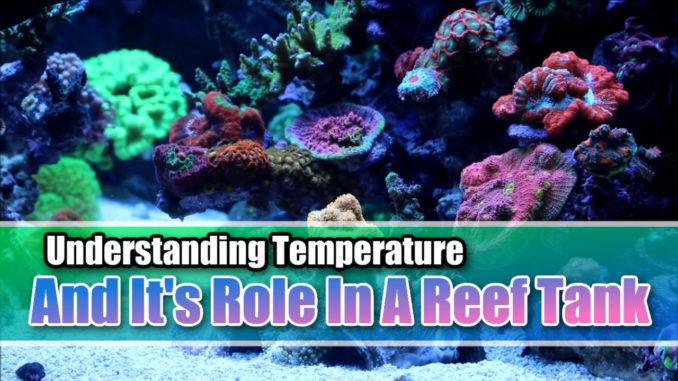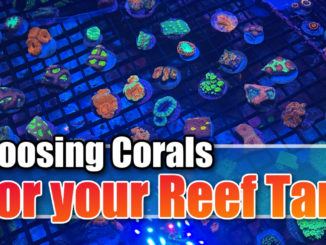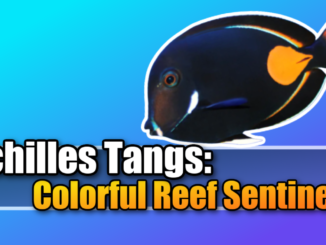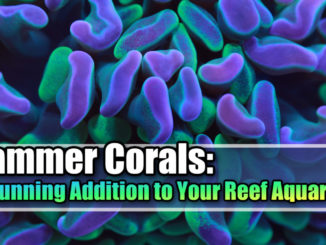
Reef tanks are a popular and fascinating way to bring the beauty of the ocean into your home. These tanks are carefully designed and maintained to provide a healthy and thriving environment for a wide variety of aquatic organisms, including fish, coral, and invertebrates. One critical factor in the success of a reef tank is temperature, which can have a significant impact on the health and vitality of the organisms living within the tank.
The ideal temperature range for a reef tank is generally between 75 and 80 degrees Fahrenheit (23-27 degrees Celsius). We tend to aim for the middle and go for 78 degrees. This range is comfortable for most marine life and provides a stable and consistent environment. However, maintaining a stable temperature in a reef tank can be challenging, and deviations from this range can have significant consequences for the health of the livestock within the tank.
One of the most common causes of temperature fluctuations in a reef tank is ambient temperature changes. For example, in the summer months, the temperature of a room can increase due to increased sunlight or higher outdoor temperatures. Similarly, during the winter months, the temperature in a room can decrease due to colder outdoor temperatures or increased use of heating systems.
The temperature of the room where the reef tank is located can have a significant impact on the temperature of the water within the tank. For example, if the tank is located in a room that is consistently warm, the temperature of the water may be higher than the ideal range for the reef tank. Similarly, if the tank is located in a room that is consistently cool, the temperature of the water may be lower than the ideal range.
To prevent these temperature fluctuations, it is important to select a location for your reef tank that is away from sources of heat or cold, such as windows, heating and cooling vents, and doors. Additionally, it is important to choose a location that is relatively stable in temperature throughout the day and night, as significant temperature fluctuations can be stressful on marine life.
To prevent these temperature fluctuations, it is essential to use a high-quality heater in the reef tank. Heaters are available in a wide range of sizes and styles, and it is essential to choose a heater that is appropriate for the size of the tank. It is also important to monitor the temperature of the water regularly, using a thermometer or digital temperature probe, to ensure that the heater is functioning correctly and the temperature is within the desired range.
MHR’s Reef Tank Heater of Choice
We prefer the Finnex titanium heater which is a popular choice among reef tank enthusiasts due to its durability and precision. Made from high-quality titanium, this heater is resistant to corrosion and wear, making it ideal for use in saltwater aquariums. The heater features an easy-to-read digital display that shows the current temperature of the water, as well as a heater controller that allows for precise temperature adjustments. With its combination of durability and precision, the Finnex titanium heater is an excellent choice for maintaining a stable and consistent temperature in your reef tank.
Another important factor to consider when maintaining the temperature in a reef tank is the use of lighting systems. Many reef keepers use lighting systems to provide the appropriate spectrum and intensity of light for the corals within the tank. However, these lighting systems such as metal halides, can generate a significant amount of heat, which can raise the temperature of the water in the tank. In modern reef keeping, the use of LED’s such as the EcoTech Marine Radions XR15’s have helped reduce the amount of heat exposure to the aquarium.
In addition to maintaining a stable temperature, it is also essential to acclimate new organisms to the temperature of the reef tank slowly. When introducing new fish, coral, or invertebrates to the tank, it is important to slowly adjust the temperature. This process can be accomplished by floating the bag containing the fish, coral or invert in the tank for 30 minutes with the lights off. Then drip acclimating the new additions (conventionally, fish and invertebrates) to the temperature and other parameters within the reef tank. It is not necessary to drip acclimate corals before adding them to your tank. Although we do recommend dipping corals before adding them.
Finally, it is important to understand the potential consequences of temperature fluctuations in a reef tank. When the temperature of the water in the tank fluctuates outside of the ideal range, it can stress and even harm the marine life living within it. For example, elevated temperatures can cause coral to bleach, which can lead to their death. Similarly, low temperatures can cause fish and invertebrates to become lethargic and even die. It is essential to monitor the temperature of the water regularly, which should be apart of your daily inspection of the tank.
Reef Tank Temperature Final Thoughts
In conclusion, maintaining a stable temperature is a critical factor in the success of a reef tank. Temperature fluctuations can have significant consequences for the health and vitality of the life within the tank, and it is essential to use appropriate equipment, monitor the temperature regularly, and take appropriate action to maintain a stable and consistent environment. Consistency is key with maintaining a successful reef tank.
To lean more about reef tank parameters follow the link.





